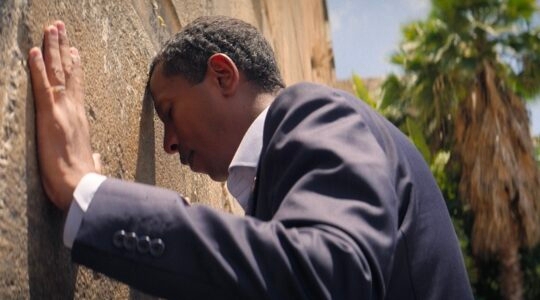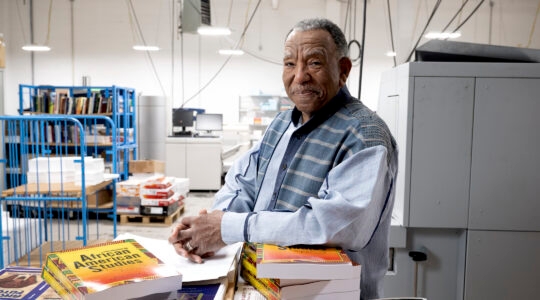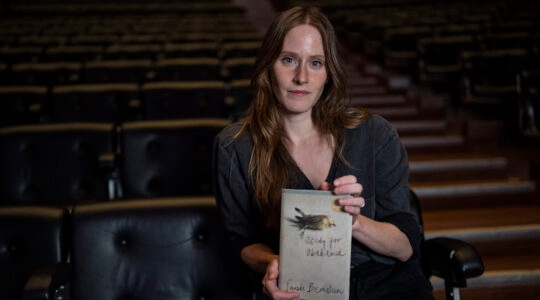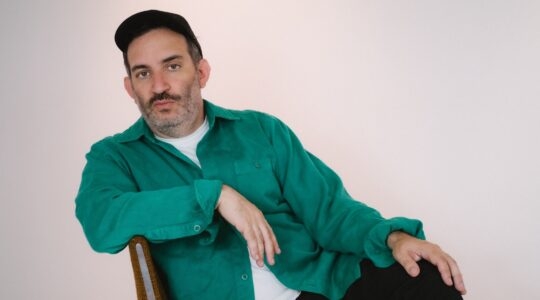Between "Defiance" and "Inglourious Basterds," plenty of people have concluded that Jewish vengeance is in. But here come a few developments to remind us of the other side of the debate, that sometimes the better course is passivity in the face of, if not outright cooperation with, the enemy.
Later this month "Killing Kastzner" will hit U.S. theaters.
Over at the Huffington Post, Richard Chesnoff offer a thumbs up to the documentary and a sympathetic take on Rudolf Kasztner, the Hungarian journalist and Zionist who bargained with the Nazis to save about 1,500 Jews, including several members of his family.
To those he saved and their descendants, Kasztner became a hero, a Jewish Oskar Schindler who made a difficult but responsible moral choice. To others, especially those whose families were not chosen to be saved, Kasztner became an unforgivable villain, a man who played God, consorted with the devil and actually caused the deaths of hundreds of thousands of Jews by withholding crucial information from the general public about the Auschwitz death camp .
Accused after the war of being a collaborator by another Hungarian Jew, he was the center of a tendentious libel trial that rocked Israel during the early 1950s and eventually was gunned down in Tel Aviv by a man convinced Kasztner had betrayed his own people.
But had he? For more than 50 years, there has been little or no discussion of Kasztner. While Schindler, Swedish diplomat Raoul Wallenberg and others became icons of righteousness for their role in saving Jewish lives, Kasztner was almost a taboo subject. His work was unmentioned in Israeli textbooks. Holocaust museums paid scant if any attention to him. When his name was raised, it triggered rage and bitter debate. Indeed, in "The Final Days," Steven Spielberg’s Academy Award-winning documentary about the Hungarian Holocaust, Kasztner’s name is never heard, his face never seen.
Was Rezso Kasztner a heroic rescuer of his people or a cold-blooded rogue collaborating with its worst enemies? Through reenactments of his politicized trial, accusations after 50 years by Kasztner’s assassin, Ze’ev Eckstein, that there was a conspiracy, and a stunning confrontation between the now free killer and Kasztner’s daughter, audiences can finally judge this forgotten man for themselves.
The film "Tickling Leo" probes the Kastzner controversy through a dramatic lens, focusing on three generations of a Jewish family, with roots in Hungary and branches in New York and Israel.
Adding fuel to this fiery debate, the rerelease of Edwin Black’s "The Transfer Agreement":
The Transfer Agreement is Edwin Black’s compelling, award-winning story of a negotiated arrangement in 1933 between Zionist organizations and the Nazis to transfer some 50,000 Jews, and $100 million of their assets, to Jewish Palestine in exchange for stopping the worldwide Jewish-led boycott threatening to topple the Hitler regime in its first year.
This updated edition includes the author’s stunning new introduction and a powerful new afterword by Anti-Defamation League national director Abraham H. Foxman.
Finally, last week saw the passing of Marek Edelman, the last surving commander of the Jewish forces in the Warsaw Ghetto. Essentially the precursor to Quentin Tarantino’s band of Jewish G.I. tough guys, Edelman and his fellow fighters have long served as the Zionist archetype of how Jews should meet their oppressers — with gun in hand, ready to fight to the death. But the lengthy obituary in The New York Times noted that Edelman had espoused a more nuanced view:
Then, in 1976, he suddenly spoke out, telling Hanna Krall, a Polish writer of Jewish origin, what he had so carefully remembered. The recollections were stark and surprising. He challenged those who claimed that there had been many more than 220 ghetto fighters. Most provocatively, he insisted that it was not more meaningful or heroic to die with a gun in one’s hands than to perish in apparent submission to an overwhelming and invincible evil.
“These people went quietly and with dignity,” he told Mrs. Krall, speaking of the millions killed in the Nazi gas chambers. “It is an awesome thing, when one is going so quietly to one’s death. It is definitely more difficult than to go out shooting.”
After the book appeared, Dr. Edelman was often sought out by visitors from around the world, whose questions he would sometimes wave aside gruffly, saying that people who had not been there could never understand the choices made in the ghetto. He would cite the example of a nurse in the ghetto hospital who he said was greatly admired, and deservedly so, for smothering newborn children to save their mothers the inevitable pain that would come when the babies starved to death.
He would dispute the use of the word “uprising,” saying that it normally implied some slight prospect of victory. In the ghetto, he said, there was no such prospect.
“It was a defensive action,” he would say, or, “We fought simply not to allow the Germans alone to pick the time and place of our deaths.”

Help ensure Jewish news remains accessible to all. Your donation to the Jewish Telegraphic Agency powers the trusted journalism that has connected Jewish communities worldwide for more than 100 years. With your help, JTA can continue to deliver vital news and insights. Donate today.





